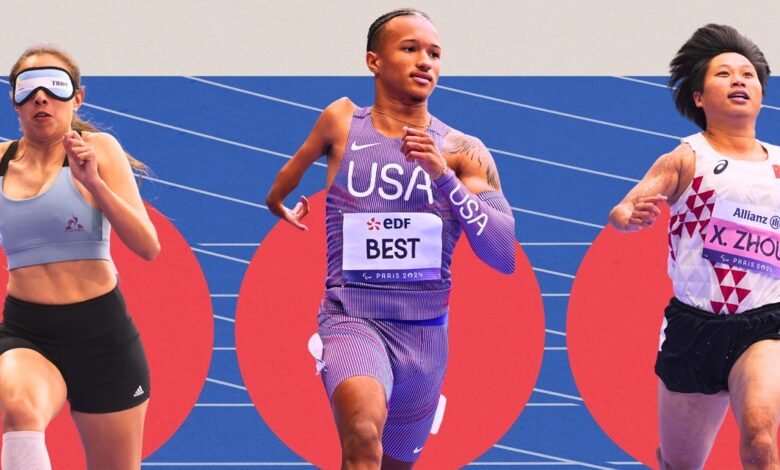Everything You Need to Know About the Paralympic Classifications

You’re all geared up to watch the 2024 Paralympic Games. But as you flick on an event, you can’t help but wonder: Why are there 16 different men’s 100-meter races on the track and seven different groups of women swimming the 400-meter freestyle in the pool?! And what’s with all those letters and numbers by the name of each competition?
The answer to both is classification, a system that groups athletes according to their type of impairment (for example, visual impairment, reduced muscle power, or a limb deficiency) and also how it affects their ability to perform the skills needed for their sport. Here’s what to know about the system so you understand what you’re watching as the Paralympics continues.
Why are there Paralympic classifications in the first place?
The whole point is to make the competition as fair as possible by matching up athletes with similar capabilities. Otherwise, the least disabled athlete would often prevail, according to the International Paralympic Committee (IPC). With classification, winning becomes about fitness, skill, focus, athletic abilities—or, as the IPC describes it, “sporting excellence,” instead.
While athletes often compete against people with similar types of disabilities, the exact health condition is less important than how—and how much—it affects their movement, coordination, and balance. So for instance, athletes with spinal cord injuries, birth defects like spina bifida, and complications from a viral disease might compete against each other if their conditions have similar effects on their bodies, per World Para Athletics.
How does it all break down?
Ten types of impairments make athletes eligible to compete in Paralympic sports on an international level. Eight are physical impairments, including short stature; limb deficiency such as amputation; and a lack of muscle power, often due to paralysis. The other two are visual impairment and intellectual impairment.
Some sports, such as athletics (a.k.a. track and field) and swimming, have opportunities for athletes with all 10 impairments. Others are specific to one impairment. For instance, goalball is only for athletes with visual impairment, and para-powerlifting is a bench-press competition for those with limitations in their legs or hips and has only weight categories, not specific classes. Meanwhile, events like para-dressage and para-cycling have categories for a limited number of impairments.
So what exactly do the letters and numbers mean?
Athletes are grouped into sport classes first by their type of impairment, and then the degree to which their disabilities affect them and their ability to compete.
The letters correspond to the sport. For example, S for swimming, T for track (running and jumping), F for field (throwing), SH for shooting, and PR for para-rowing. Some sports also have subcategories within them. Road cyclists, for example, might be in a class that starts with C for cycling, H for handbike, T for tricycle, or B for blind riders, who compete on tandem bikes.
The numbers refer to both the type and degree of impairment and vary by sport. Higher numbers usually, though not always, mean less severe impairments. In swimming, for instance, classes S11 to S13 are for visual impairments. S11 athletes have little to no vision and wear blackened goggles so everyone can compete equally, while S13 athletes might have limited peripheral vision but can see the end of the pool from a maximum of 5 meters (roughly 16 feet) away.
Why are the classes different by sport?
There’s no one-size-fits-all because each sport has its own history and governing body, which decides the rules for its competitors. Plus, each requires specific skills and movements. What holds someone back on the track might not be as much an issue for someone in wheelchair fencing or para-canoe, and vice versa.



